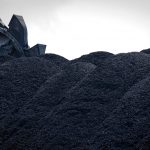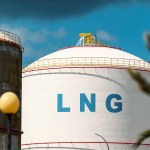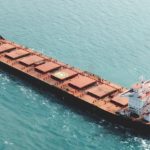Other alternative marine fuels can be considered “toddlers” compared to LNG, as the latter offers an immediate, low-risk and incremental solution for shipping’s decarbonization pathway, SEA-LNG Chairman Peter Keller said.
“When compared to traditional fuels, LNG is more of a teenager with all the growing pains, challenges and victories associated with adolescence,” Keller said in a statement in the week ended Dec. 9.
LNG is “maturing all the time” as the marine fuel market expands, newbuild orders increase and the LNG pathway, incorporating biomethane and eventually e-methane produced from renewable hydrogen, gains global acceptance, Keller said.
Many shipowners are choosing LNG for its immediate environmental benefits, as well as the limited availability, infrastructure and palatable pricing of other alternative fuels.
Platts, part of S&P Global Commodity Insights, assessed the JKM — the benchmark price reflecting LNG delivered to Northeast Asia — for January at $14.906/MMBtu on Dec. 6, down 7.7 cents/MMBtu from Dec. 5. LNG bunker Singapore was assessed at $884.312/mt, down 0.45% over the same period, while the 0.5%S marine fuel FOB Singapore cargo was assessed at $525.55/mt on Dec. 6.
LNG produces virtually zero SOx and particulate matter emissions, reduces NOx emissions by up to 95% and lowers greenhouse gas emissions by up to 23%.
“While the approximately 2,200 LNG-fueled vessels and LNG carriers represent only ‘two minutes into the hour’ of the global fleet of approximately 60,000 deepsea vessels, it remains an adolescent fuel that is maturing significantly faster than other alternatives,” industry coalition SEA-LNG said.
LNG remains the “main driver” for new orders of alternative-fueled ships, with 23 out of 27 such orders placed in November, global classification society DNV said Dec. 2.
Four new orders for ammonia-fueled ships were registered in November, according to DNV.
There are currently 54 methanol-fueled ships and two ammonia-fueled ships on the water, SEA-LNG said, citing DNV data.
“With high-profile owners now choosing the LNG pathway, we anticipate this trend will continue and accelerate through 2025 and beyond,” Keller said.
“As the various alternative fuel pathways mature, there is a growing realization that, despite previous aspirations, some alternative fuel pathways — like the LNG pathway — are more practical and realistic than others,” he added.
The latest orders include one by Maersk, which said Dec. 2 that as part of its fleet renewal program, it had ordered 20 LNG-capable containerships with a total capacity of 300,000 twenty-foot equivalent units.
On the same day, Norwegian car carrier UECC said it had sealed a new deal with LNG supplier Titan to accelerate its use of bio-LNG as a marine fuel in 2024 and 2025.
Citing the benefits of LNG usage, SEA-LNG also emphasized its safety aspect, noting that LNG is easy to transport, poses minimal, if any, risk to marine environments, has a low flammability range and is non-toxic.
Effective regulations, standards and guidelines for safe operations are widespread, and LNG has been shipped globally for almost 60 years without major incidents at sea or in ports, SEA-LNG said.
However, despite substantial growth, the bunker market is lagging, and concerns persist about the ability to supply the rapidly growing fleet of LNG-fueled ships.
Keller said, “While investment in newbuild LNG-fueled ships is robust, we need to see the same for bunker vessels, supply and liquefaction infrastructure.”
Another critical need during this maturing process, amid increased regulation of carbon emissions, is the global adoption of standardized chain of custody models to verify that the fuels used are low carbon, SEA-LNG said.
Such verification builds investor confidence in new fuel supply chains and accelerates the transition to low-carbon fuels, enabling early adoption despite limited supply, it added.
“They will create a market for green fuels by connecting buyers to fuel producers away from bunker ports, enabling faster scaling and providing flexibility to shipping companies at lower cost,” SEA-LNG said.
Source: Platts






